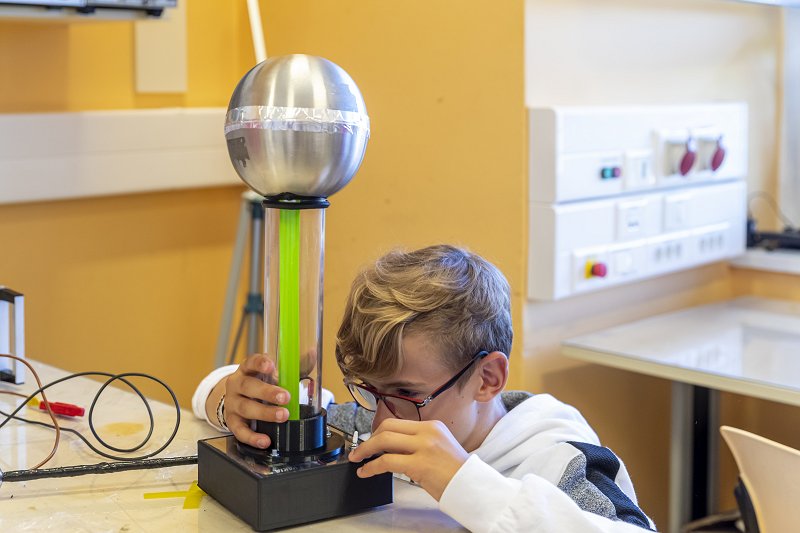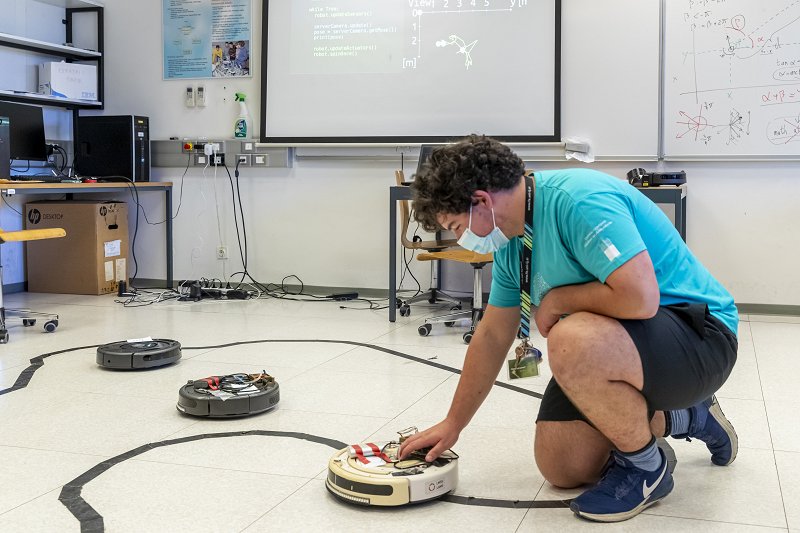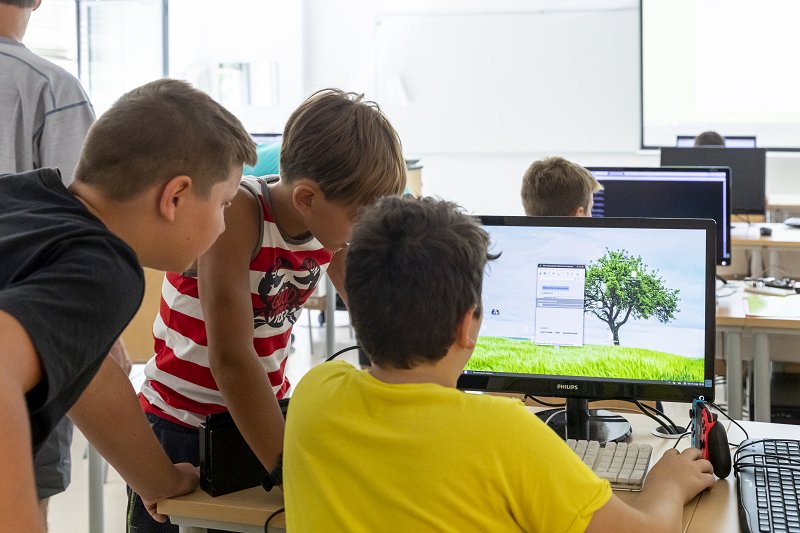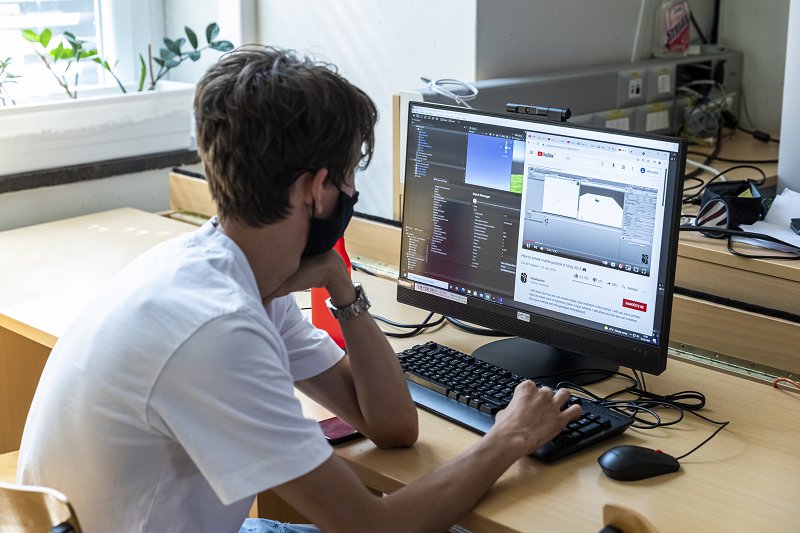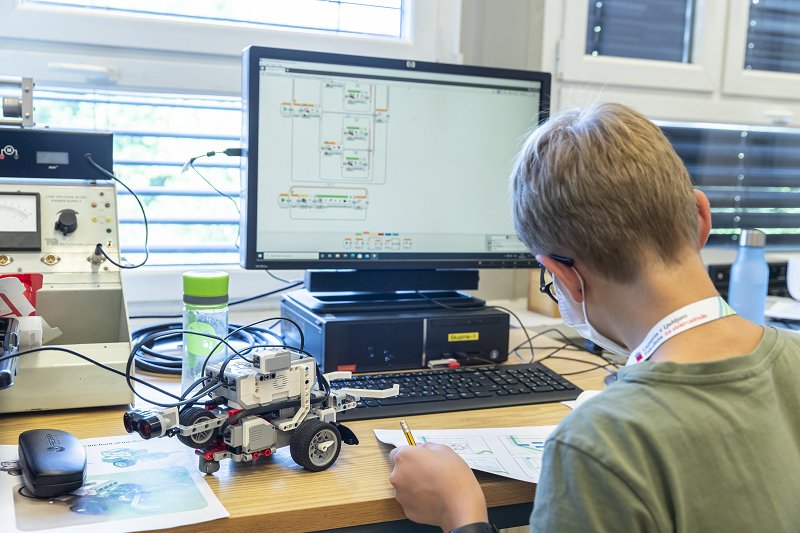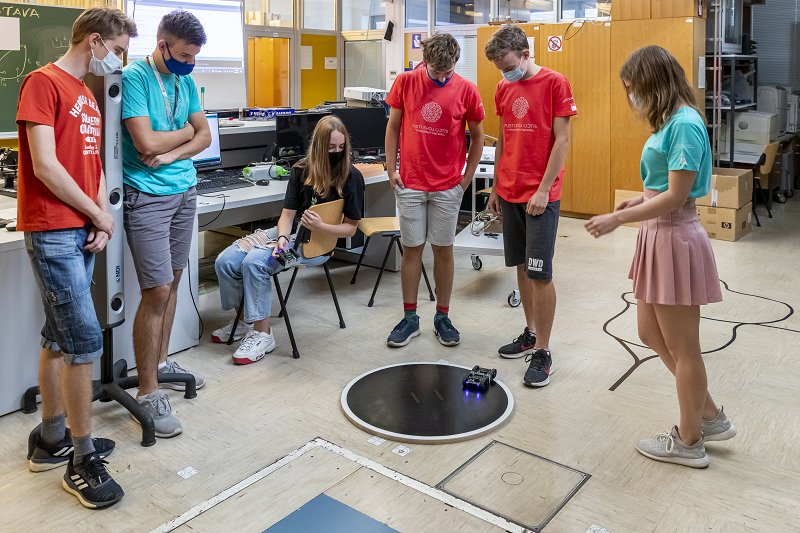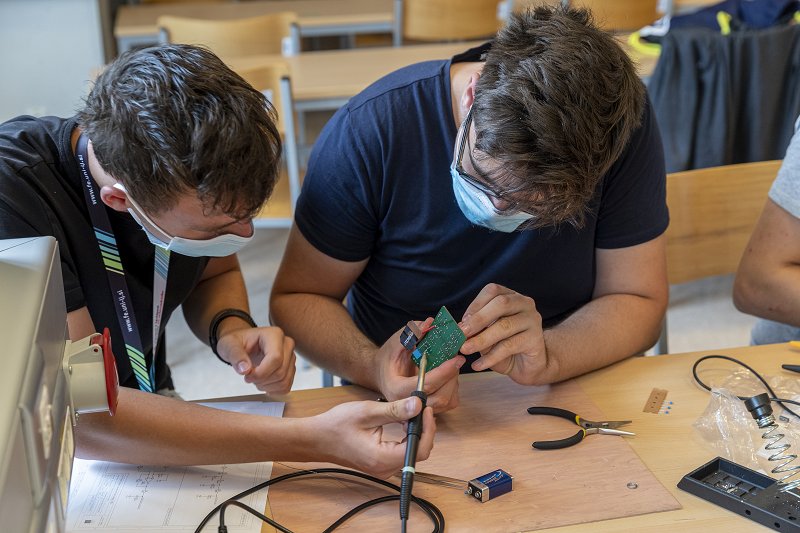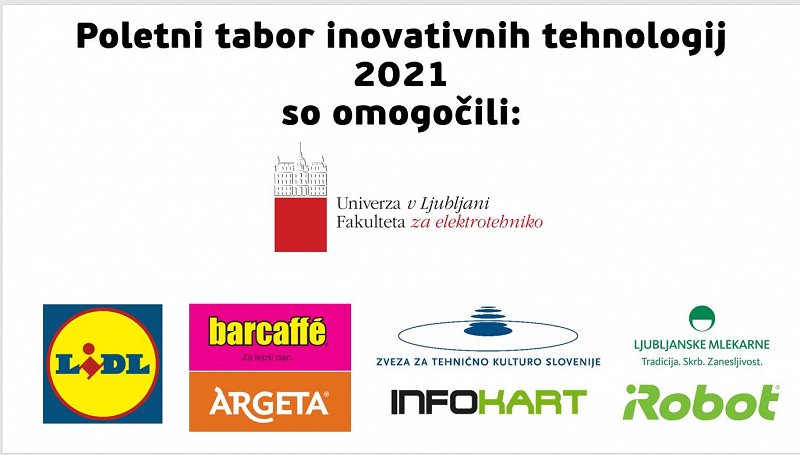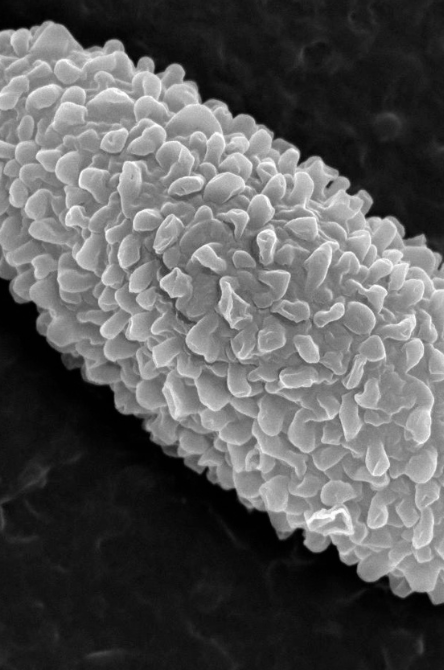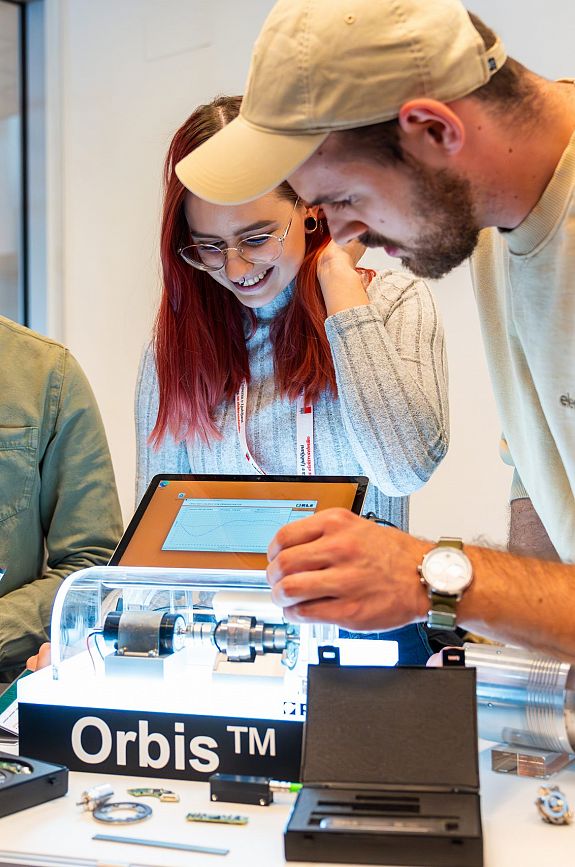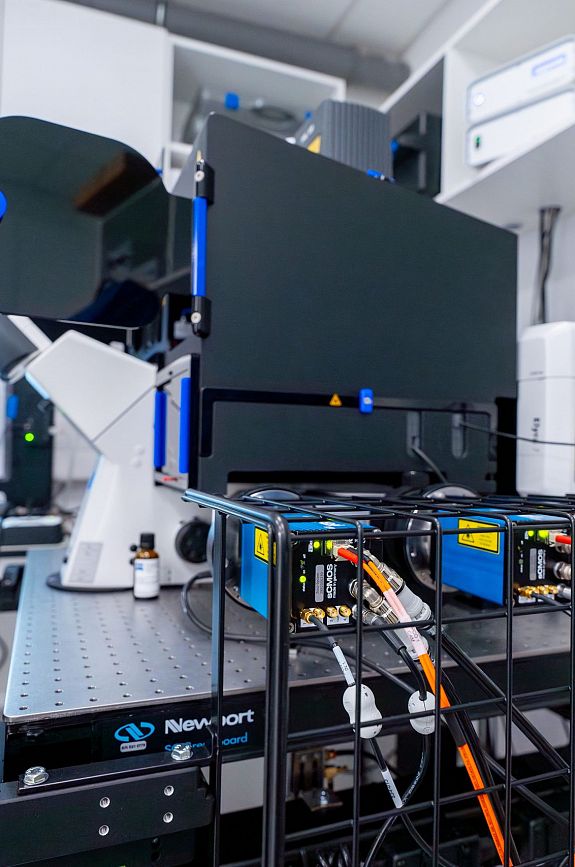Knowledge acquired at PTIT 2021
Date of publication: 25.8.2021This year, the Faculty of Electrical Engineering at the University of Ljubljana hosted the 22nd Innovative Technologies Summer Camp, which brought together 68 children in 8 different workshops, who spent a week exploring modern innovative technologies and learning about the diverse world of electrical engineering and multimedia under the guidance of mentors.
At the workshop PING PONG CYCLOTRON participants were first introduced to the basics of the electric field and met the inventor Robert J. Van de Graaff. They learned essential information about his life and work. They then focused on Van de Graaff's generator and the cyclotron and learned how both devices work and how they are made. During the workshop, a small-scale Van de Graaff generator was built and kept by the participants after the workshop. The week was also enriched by a visit to the High Voltage Laboratory at the EIMV Institute and the Quiet Room at the FE. In addition to the above, they also saw some other interesting experiments in our laboratory. For an extra touch of fun, they took part in a competition to measure the voltage generated by a generator using a ball spark. Many interesting memories and photographs were made during the workshops themselves.
The VITEZ WITHOUT A VOLAN workshop introduced them to the field of autonomous mobile systems and artificial intelligence. They worked in groups on four robotic vacuum cleaners, each equipped with its own Raspberry Pi embedded system with camera. The camera on the mobile system was pointed towards the ceiling, where there was a network of special badges. The positions of all the badges were entered into a machine vision localisation program, which detected the positions of the badges in the image and continuously recalculated the position of the mobile system in space. A keypad control program was developed to operate the mobile system. The position information was then used to write control algorithms to autonomously drive the mobile system between different targets in space. Using the sensors on the robotic vacuum cleaner, they also implemented an algorithm to automatically guide the mobile system along a line and to act appropriately when obstacles are detected. The workshop also taught them the basics of speech recognition and speech synthesis, which allowed them to implement a system for voice communication with the mobile system in Slovenian. The speech recogniser was used so that when the mobile system received a voice command, it performed a specific action, and the speech synthesiser enabled the mobile system to respond to the user. They also wrote different algorithms to control a coloured LED strip, which was mounted on the front bumper of the mobile system and indicated the current actions of the mobile system with light signs.
At the SCRATCHMOJSTRI workshop, participants learned the basics of programming with blocks in CODE, SCRATCH and MICRO:BIT programming languages. They learned how to draw, use loops, conditional statements, messages and cloning. They built many interesting programmes in geometry, iteration, recursion, dialogues and quizzes. Participants were also given a BBC Microbit microcomputer with a display on which they executed programmes written in Micro:bit. At the end, each participant presented their project.
The VIRTUAL= ENTERTAINMENT workshop, organised in cooperation with the Sieva Development Centre, was the first of its kind to introduce participants to new augmented reality (AR), mixed reality (MR) and virtual reality (VR) technologies. The workshop content included lectures, testing different VR and MR glasses, relaxing while playing VR video games and developing their own AR application using the Unity game engine and the Vuforia software tool.
The LEGO GUIDES workshop first introduced the basic concepts of controlling autonomous mobile systems, as well as the technical and programming features of Lego Mindstorms EV3 kits. Next, participants designed, built and programmed mobile systems that were able to carry out a given task. By the end of the workshop, they had mastered skills in sensors (gyroscopes, ultrasonic distance sensors, encoders, etc.), mobile system control concepts and programming. They all acquired these skills through the concept of project work (mechanical design and programming of the system to perform the task as reliably and quickly as possible). Finally, they competed with their systems in a friendly competition.
The workshop "SUN COTTAINED IN A MOBILE PHONE " involved making a solar phone charger. The children used a laser to cut the solar cells to the desired size, assembled them into a module and laminated it. Through various experiments, they learnt the basics of electronics, soldered the electronics, connected the battery and soldered the microcontroller. They learned how to design a case and print it on a 3D printer. Finally, they assembled the solar charger into a case and connected it to their phones.
At the ROBOSUMO workshop, participants first learned about the use and programming of classic industrial and collaborative robots. They developed their own applications for synchronous welding, picking up objects from a conveyor belt, inserting them into bearings based on a force and torque sensor, and manipulating objects they recognised with robot vision. Next, they were introduced to the Zumo 32U4 mobile robots, where they implemented step-by-step the individual robot functionalities (motors, encoders, sensors, screen, buzzer). The robot programme included line following as well as sumo fighting strategies, some of which were enhanced with their own music. On the last day, a tournament was held according to the rules of the mini robo sumo competition.
In the workshop FROM ELECTRONS TO STARS , participants learnt about the basic building blocks of electronic circuits and the physical laws on which they function. They found out that the same laws also determine how some sensors work and then built a sensor for electrical wires hidden in walls. At the same time, they used the same circuit to measure the humidity of the walls and found that they could also measure how much pot plants had been watered. They added a wireless detector for mobile phone calls, completing the multifunctional measuring device with a loudness meter. But not only to make the meter, they also visited the experimental nuclear reactor in Podgorica near Ljubljana and tried their hand at mathematical simulations of gunshots.
